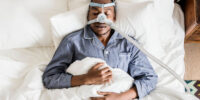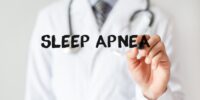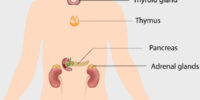Why Is Sleep Apnea Often Undiagnosed Or Misdiagnosed?

Sleep apnea, a common sleep disorder characterized by interrupted breathing during sleep, often goes undiagnosed or misdiagnosed. This article explores the reasons behind this issue, shedding light on the various factors contributing to the underdiagnosis or misdiagnosis of sleep apnea.
Lack of awareness and education among both patients and healthcare providers plays a significant role, as symptoms are often misunderstood or overlooked. Additionally, the vague and common symptoms of sleep apnea can be easily attributed to other conditions, leading to misdiagnosis.
Limited access to sleep testing facilities further hinders the accurate diagnosis of this disorder. Inaccurate or incomplete diagnostic tools and insufficient training of healthcare providers also contribute to the problem.
Furthermore, stigma and misconceptions surrounding sleep disorders can discourage individuals from seeking medical attention. By understanding these challenges, efforts can be made to improve the diagnosis and treatment of sleep apnea, ultimately enhancing the overall well-being and quality of life for affected individuals.
Key Takeaways
- Lack of awareness and education among patients and healthcare providers contribute to underdiagnosis or misdiagnosis of sleep apnea.
- Vague and common symptoms of sleep apnea can be easily attributed to other conditions, leading to misdiagnosis.
- Limited access to sleep testing facilities hinders accurate diagnosis of sleep apnea.
- Inaccurate or incomplete diagnostic tools and insufficient training of healthcare providers contribute to the problem.
Lack of Awareness and Education
The lack of awareness and education surrounding sleep apnea contributes to its frequent underdiagnosis or misdiagnosis. Sleep apnea is a common sleep disorder characterized by pauses in breathing or shallow breaths during sleep. Despite its prevalence, many individuals, including healthcare professionals, remain unaware of the condition’s symptoms and consequences.
Consequently, individuals experiencing symptoms such as loud snoring, excessive daytime sleepiness, or morning headaches may attribute them to other causes, leading to misdiagnosis or delayed diagnosis. Furthermore, the lack of education among healthcare professionals about sleep apnea may result in the condition being overlooked or misinterpreted as other disorders, such as depression or insomnia.
Improved awareness campaigns and educational initiatives targeting both the general population and healthcare professionals are crucial in reducing the underdiagnosis and misdiagnosis of sleep apnea.
Vague and Common Symptoms
Common symptoms of sleep apnea are often vague and easily attributed to other conditions, leading to frequent misdiagnosis or lack of diagnosis. Patients with sleep apnea may experience excessive daytime sleepiness, loud snoring, and morning headaches, which are also common symptoms of other sleep disorders or medical conditions. Additionally, individuals with sleep apnea may suffer from insomnia, difficulty concentrating, and mood swings, further adding to the confusion and potential misdiagnosis. The table below summarizes the symptoms commonly associated with sleep apnea and other conditions that share similar symptoms.
| Sleep Apnea | Other Sleep Disorders | Medical Conditions |
|---|---|---|
| Excessive Daytime Sleepiness | Narcolepsy | Hypothyroidism |
| Loud Snoring | Restless Leg Syndrome | Chronic Fatigue Syndrome |
| Morning Headaches | Insomnia | Depression |
| Insomnia | Hypertension |
By recognizing the overlap in symptoms, healthcare providers can improve their ability to accurately diagnose sleep apnea and provide appropriate treatment.
Overlapping Symptoms with Other Conditions
An understanding of the overlapping symptoms between sleep apnea and other conditions can assist healthcare providers in accurately diagnosing and treating patients. Sleep apnea shares symptoms with various medical conditions, making it challenging to distinguish it from other disorders.
For example, excessive daytime sleepiness is a common symptom of both sleep apnea and narcolepsy. Similarly, symptoms such as fatigue, irritability, and difficulty concentrating can be attributed to both sleep apnea and depression. Furthermore, sleep apnea can also mimic symptoms of other respiratory disorders, like asthma or chronic obstructive pulmonary disease (COPD).
The presence of these overlapping symptoms often leads to misdiagnosis or delayed diagnosis of sleep apnea, resulting in inadequate treatment and potential complications. Therefore, healthcare providers should consider the possibility of sleep apnea when evaluating patients with these overlapping symptoms, ensuring appropriate management and improved patient outcomes.
Reluctance to Seek Medical Attention
Reluctance to seek medical attention for symptoms related to disrupted sleep patterns and respiratory distress can hinder the timely diagnosis and treatment of potential underlying conditions.
Sleep apnea, a common sleep disorder characterized by repeated interruptions in breathing during sleep, is often undiagnosed or misdiagnosed due to several factors. One key reason is the lack of awareness and understanding about the condition among the general population. People may dismiss their symptoms as a normal part of aging or attribute them to other factors, such as stress or poor sleep hygiene.
Additionally, individuals may feel reluctant to seek medical help due to fear, embarrassment, or a belief that their symptoms are not severe enough to warrant medical attention. This reluctance can lead to delays in diagnosis and appropriate treatment, potentially exacerbating the negative health consequences associated with sleep apnea.
Limited Access to Sleep Testing Facilities
Limited access to sleep testing facilities can hinder the accurate diagnosis and appropriate treatment of potential sleep disorders. Sleep apnea, being a common sleep disorder, often remains undiagnosed or misdiagnosed due to this limitation.
Sleep tests, such as polysomnography, are essential in evaluating sleep apnea, as they measure various physiological parameters during sleep. However, the availability of sleep testing facilities is limited, particularly in rural areas or regions with a lower socioeconomic status. This lack of access to sleep testing facilities prevents individuals from undergoing the necessary diagnostic tests, resulting in a delay in the identification and treatment of sleep apnea.
Consequently, the potential health risks associated with untreated sleep apnea, such as cardiovascular problems and impaired cognitive function, may persist, further highlighting the importance of addressing the limited access to sleep testing facilities.
Inaccurate or Incomplete Diagnostic Tools
Insufficient accuracy and completeness of diagnostic tools can hinder the proper identification and treatment of potential sleep disorders. Sleep apnea, a common yet often undiagnosed or misdiagnosed condition, is particularly affected by this issue.
The following factors contribute to the inaccurate or incomplete diagnostic tools in sleep apnea diagnosis:
- Lack of standardized screening methods: The absence of universally accepted screening tools for sleep apnea makes it challenging to identify the condition accurately.
- Subjective nature of symptoms: Sleep apnea symptoms, such as snoring or daytime sleepiness, are subjective and can vary in severity. This subjectivity poses a challenge in accurately diagnosing the disorder.
- Limited monitoring parameters: Diagnostic tools used for sleep apnea testing, such as home sleep tests or polysomnography, may not capture all relevant physiological data. This limitation can lead to an incomplete understanding of the condition, potentially resulting in misdiagnosis or underdiagnosis.
Addressing these issues and improving the accuracy and completeness of diagnostic tools is crucial in ensuring timely and appropriate treatment for individuals with sleep apnea.
Healthcare Provider Knowledge and Training
Healthcare provider knowledge and training regarding the identification and management of sleep disorders is essential for accurate diagnosis and effective treatment. However, there is evidence suggesting that healthcare providers may lack sufficient knowledge and training in sleep medicine, leading to the underdiagnosis or misdiagnosis of sleep apnea.
A study published in the Journal of Clinical Sleep Medicine found that primary care physicians had limited knowledge about sleep apnea and its consequences. This lack of expertise may result in healthcare providers overlooking or misattributing symptoms, leading to delayed or incorrect diagnosis.
Furthermore, the American Academy of Sleep Medicine has highlighted the need for improved education and training for healthcare providers in sleep medicine to ensure accurate diagnosis and appropriate treatment. By enhancing healthcare provider knowledge and training in sleep medicine, the rates of undiagnosed or misdiagnosed sleep apnea cases could potentially be reduced.
Stigma and Misconceptions Surrounding Sleep Disorders
Sleep apnea is often undiagnosed or misdiagnosed due to various factors. One significant factor is the stigma and misconceptions surrounding sleep disorders. Many people mistakenly believe that snoring is harmless and fail to recognize it as a potential symptom of sleep apnea. This misconception often leads to a delay in seeking medical attention.
Additionally, the lack of awareness and understanding of sleep disorders among the general population contributes to the underdiagnosis of sleep apnea. People may dismiss the symptoms or attribute them to other causes, further complicating the diagnostic process.
Furthermore, the social stigma associated with sleep disorders can discourage individuals from seeking medical help or discussing their symptoms openly. These factors together create a barrier to proper diagnosis and treatment of sleep apnea.
- Negative societal attitudes towards sleep disorders
- Fear of being judged or stigmatized
- Lack of public education on sleep disorders
Frequently Asked Questions
How does the lack of awareness and education contribute to the underdiagnosis or misdiagnosis of sleep apnea?
The lack of awareness and education about sleep apnea contributes to its underdiagnosis or misdiagnosis. This is because healthcare professionals may not recognize the symptoms or understand the importance of screening and diagnosing the condition.
What are some vague and common symptoms of sleep apnea that often go unnoticed or are mistaken for other conditions?
Some vague and common symptoms of sleep apnea that often go unnoticed or are mistaken for other conditions include excessive daytime sleepiness, loud snoring, morning headaches, and difficulty concentrating.
How do the symptoms of sleep apnea overlap with those of other medical conditions, making it difficult to differentiate and accurately diagnose?
Symptoms of sleep apnea can overlap with various medical conditions such as depression, fatigue, and hypertension, making it challenging to accurately diagnose. This overlap creates confusion and can result in sleep apnea being undiagnosed or misdiagnosed.
Why are individuals with sleep apnea often reluctant to seek medical attention, and how does this impact the diagnosis and treatment of the disorder?
Reluctance to seek medical attention among individuals with sleep apnea affects the disorder’s diagnosis and treatment. This impacts accurate identification and management, as delayed intervention may lead to worsened symptoms and increased risk of complications.
How does the limited access to sleep testing facilities affect the diagnosis of sleep apnea, and what alternatives are available for individuals who do not have access to these facilities?
Limited access to sleep testing facilities can hinder the diagnosis of sleep apnea. Alternative options for individuals without access include home sleep apnea testing and telemedicine, although these may have limitations compared to in-lab testing.











